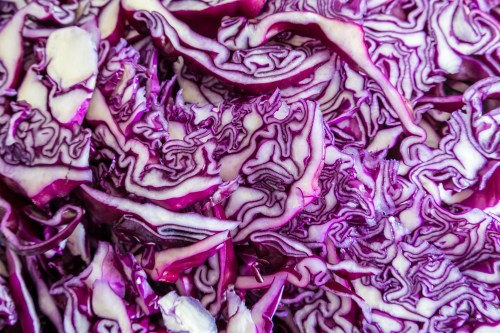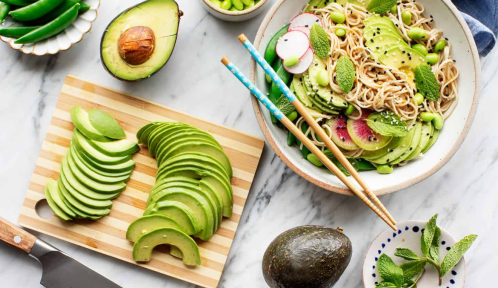There’s no denying that plastic is a convenient—if not perfect—material for carting and storing all kinds of things. But if you’re in the market for new food storage containers, investing in glass containers rather than plastic is a better bet.
Experts in This Article
a food safety expert and corporate director of technical training and consulting at Microbac Laboratories
Opting for glass food storage containers is one simple way to reduce your reliance on plastic. And better yet, the pick may also benefit your health (not to mention amplify your fridge shelfie goals and even encourage you to finish your leftovers).
Ahead, food safety expert Trevor Craig, corporate director of technical training and consulting at Microbac Laboratories, unpacks when and why it’s ideal to store your food in glass containers. Plus: best practices and advice on navigating plastic containers when it’s unavoidable or a more viable solution for your budget and food storage needs, all without cutting corners on your health in the process.
3 reasons why glass containers are optimal for (most) food storage
1. Glass safely accommodates high and low temperatures
Craig explains that glass is generally safer for a wide temperature range. Unlike plastic, glass can “get hot or cold, maintain its shape, and avoid any breakdown that could leach harmful chemicals,” he shares. For these reasons, glass containers are ideal for safe, long-term food storage in freezers. Glass can also withstand scorching hot temps in the dishwasher, which leads us to the next perk.
2. Glass is more sanitary
You know how it’s impossible to get that marinara sauce tinge out of your plastic containers? Plastic is to blame here, because it’s porous. “Glass is non-porous, so it’s easier to clean. This means there are less stains but also less places for food and bacteria to get into that can be difficult to clean,” Craig explains.
Plastic, on the contrary, presents obstacles on the cleanliness front. As Kate Reeder, MCN, RDN, LDN, previously told Well+Good, plastic food storage can become a literal breeding ground for bacteria to form. “Plastic is a porous material, meaning that it actually has super tiny holes in it, which allow particles to pass through and be absorbed,” she warned. Moreover, Trevor adds that plastic has a higher tendency to retain odors, which—to put it modestly—is far from savory.
3. Glass has a longer lifespan
Although glass food storage containers tend to cost more than plastic alternatives, they’re generally a better investment for your food quality, health, and cost-per-use. “Glass lasts longer and can be reused and recycled,” says Craig. “That isn’t always the case with plastic since it can lose shape, causing cracking or flaking and should be disposed of more often.” Of course, you’ll need to handle your glass gently to avoid breakage. But if you can do so, you can expect to maximize your investment over the long run compared to the alternative—all the while doing your part to not add more (future) plastic waste into the ecosystem.
FYIs and safety tips for plastic food storage containers
While glass food storage has some clear advantages, chances are you can’t (and won’t) use them for any and every food storage event. “In general, glass is mostly safer but doesn’t work for everyone or every situation,” says Craig. “It often costs more, isn’t exactly childproof, and can be damaged as well. It can also be heavy and not easy for on-the-go use like camping, babies and children, or daily lunches.”
Pick food-safe plastic
If and when it’s more practical to store and/or transport your food in plastic containers, heed Craig’s insights to ensure you’re using the best type of plastic. “PET or PETE (polyethylene terephthalate), HDPE or LDPE (low- and high-density polyethylene), and PP (polypropylene) are all safe for food,” he shares. “Generally, you can find this information on the bottom of the container or on the packaging.”
Go BPA-free
Craig strongly advises using plasticware that is clearly marked as BPA-free. (BPA, a chemical used to harden plastic and line food cans, is an endocrine disruptor linked to various health disorders including early puberty, breast cancer, and heart and metabolic issues.)
Don’t reuse single-use products
In addition, Craig warns that not all plastics are designed for reuse. This includes many takeout and food delivery plastic containers, which are typically designed for one use only and aren’t as sturdy as the plastic containers you’d purchase for longevity. (This, too, extends to single-use plastic water bottles—the material of which, as Craig previously explained to Well+Good, “can break down and seep dangerous chemicals” when reused.)
“Many more are not microwave-, dishwasher-, or freezer-safe, and none are oven-safe,” he explains. “Overall, think of food containers as special plastic designed for short-term storage (days or weeks)—not single-use plastic [items] like wraps, utensils, or bottles.”
Replace damaged containers
On a parting note, he advises tossing your plasticware as soon as it’s damaged—i.e., scratched, warped, discolored, stinky, and so on. “When you’re throwing it away, look into your local recycling laws to see if it can be recycled, as many types of plastic cannot be,” he adds. (Glass, on the other hand, can be recycled endlessly, presenting yet another perk of this food storage solution.)
Sign Up for Our Daily Newsletter
Get all the latest in wellness, trends, food, fitness, beauty, and more delivered right to your inbox.
Got it, you've been added to our email list.











